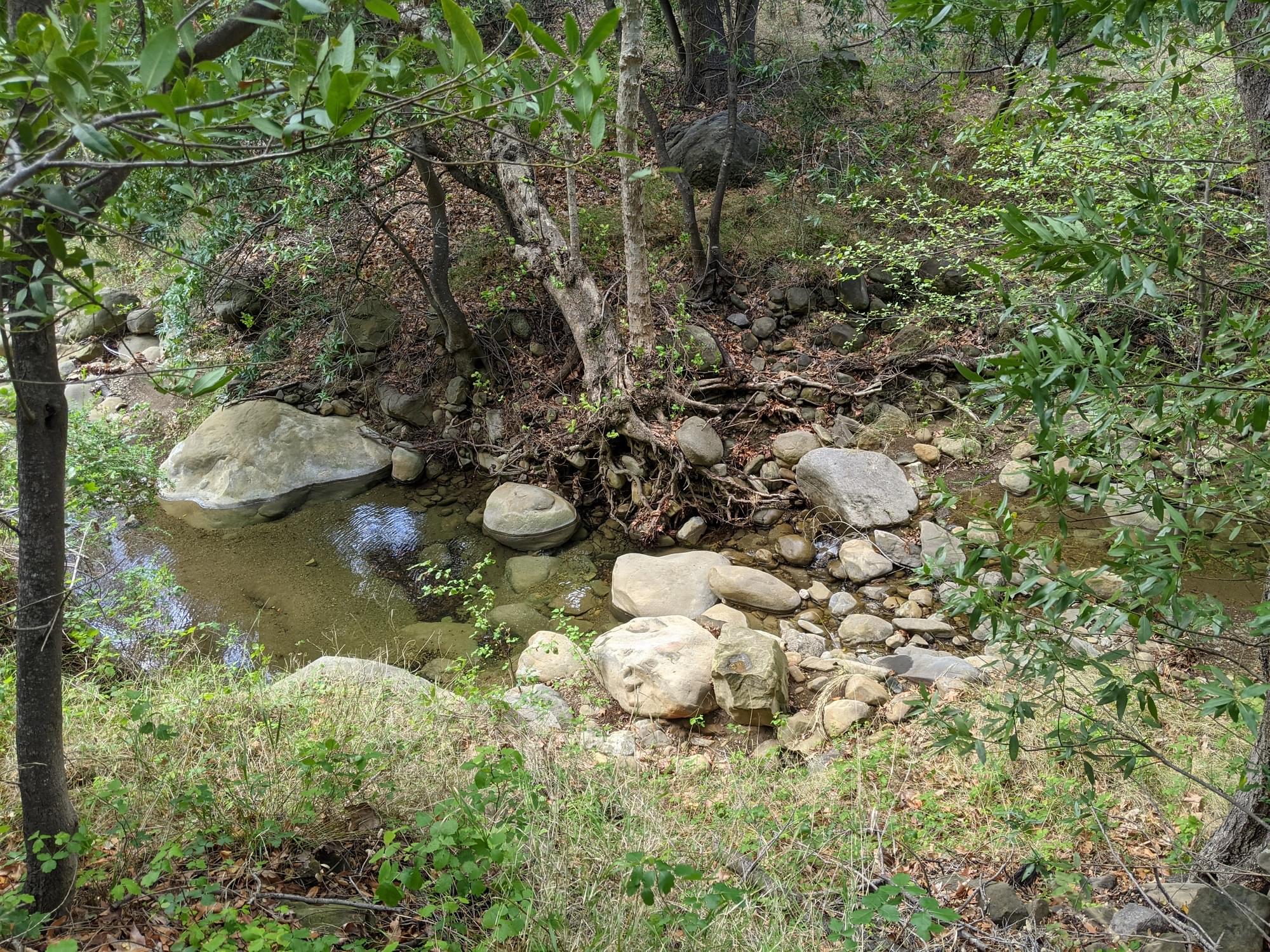Baron Ranch Trail

Baron Ranch Trail
Solvang, California 93463
Alltrails RouteBaron Ranch Restoration
Baron Ranch History
Baron Ranch County Website
Tips for Birding
Walk the trail and keep your eyes and ears open! The most locally unique birding is the low elevation riparian woodland, but all of the habitats are worth visiting. A hike of the full trail will take many hours and lots of water, but a short visit to the base of Arroyo Quemado can also be productive. Be aware that reaching the creek requires a short hike of about 0.4 miles.
Birds of Interest
Blue Grosbeak breeds here, as do other riparian-nesting songbirds which are locally uncommon on the South Coast of Santa Barbara (e.g. Yellow Warbler, Wilson's Warbler, Warbling Vireo). In winter, look for birds of shady riparian canyons, like Varied Thrush, Pacific Wren, and Brown Creeper.
About this Location
Baron Ranch has a long and complicated history. The site was first used by the Chumash for centuries; they established a permanent settlement at the base of the canyon. The settlement continued past Spanish contact, but during a conflict between Chumash groups the community was burned, leading to the name Arroyo Quemado, Spanish for 'burned creek.' Later the canyon was settled by a rancher who raised cattle and planted an orchard of avocados and cherimoya.
Eventually the land was purchased by the County of Santa Barbara, which now performs restoration activities here as mitigation for impacts incurred by the Tajiguas Landfill just to the west. The County undertakes extensive restoration plantings, invasive weed removal, and management of some of the sites' sensitive species. A large population of the state and federally listed California red-legged frog was established here after the amphibians were removed from the adjacent landfill. Currently, 30 acres of the riparian corridor is protected in a permanent conservation easement, and there are plans to add an additional 100 acres.
The county attempted to operate the existing avocado and cherimoya orchards to extract profit from the ranch, but eventually gave up due to a lack of sufficient water in the canyon. The trees were left in place and provide some food for wildlife, including bears, which frequent the ranch. Some fruit trees were destroyed during the recent Alisal Fire, which scorched much of the upland regions of the ranch, but others persist. Most of the riparian corridor is intact, and upland areas are rapidly regenerating.
The lower portions of the trail follow Arroyo Quemado but lie mostly just outside of the riparian woodland itself. Here the creek is dominated by willow (Salix lasiolepis and S. laevigata) and sycamore (Platanus racemosa) which provide nesting habitat for riparian songbirds including Yellow Warbler, Wilson's Warbler, Purple Finch, Black-headed Grosbeak, and Blue Grosbeak. California Thrashers, Spotted and California Towhees, Wrentits, and other species frequent the surrounding uplands.
As the trail follows the creek upward it gets steeper. Willows become less common and are replaced by coast live oak (Quercus agrifolia), bay-laurel (Umbellularia californica), and in some places, large white alders (Alnus rhombifolia). The latter is one of our most water-dependent riparian tree species; relatively few large alders on the South Coast of Santa Barbara County survived the series of severe droughts during 2010s and 20s, and in our area large alders can usually be taken as a sign of a relatively wet creek. Arroyo Quemado actively flows most of the year and usually does not dry even during summer in low rain years. As a consequence, many of Baron Ranch's alders persist. This reach hosts breeding Canyon Wrens, Pacific-slope Flycatchers, Black Phoebes, and other riparian and oak woodland species. Varied Thrush and Brown Creeper have both used this area in winter.
Eventually the trail leaves the riparian corridor and moves into chaparral, winding its way up to West Camino Cielo. Both the high elevation chaparral and lower elevation sage scrub / weedy fields of annuals provide interesting bird habitat in addition to the riparian areas. At high elevations above the trail split, look for breeding Lazuli Bunting and Black-chinned Sparrow (but note it is at least a 5 mile round trip hike to reach appropriate habitat).
Dogs are not allowed on the Ranch, either leashed or unleashed. Horses are permitted, however. Walking in the creekbed is prohibited to protect sensitive aquatic species.
Notable Trails
A trail connects the coastal parking lot with Camino Cielo, if you're willing to walk 6.9 miles and gain 1328 ft in elevation. For more details, see the Alltrails link.
Free roadside parking is available at the trailhead. This site was previously only open a few days per week but is now open every day.
Features
Restrooms on site
Roadside viewing
Content from Alltrails Route, Baron Ranch Restoration, Baron Ranch History, Baron Ranch County Website, and Conor McMahon